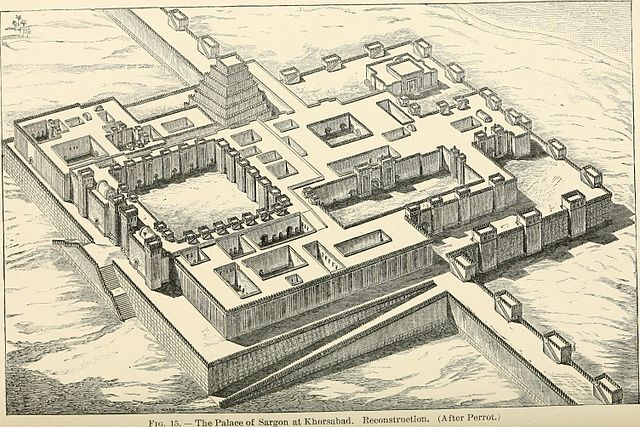Dur-Sharrukin, present day Khorsabad, was the Assyrian capital in the time of Sargon II of Assyria. Khorsabad is a village in northern Iraq, 15 km northeast of Mosul. The great city was entirely built in the decade preceding 706 BC. After the unexpected death of Sargon in battle, the capital was shifted 20 km south to Nineveh.
A human-headed winged bull known as a lamassu from Dur-Sharrukin. Neo-Assyrian Period, ca. 721–705 BC
Lamassu found during Botta's excavation, now in the Louvre Museum.
Plan of Palace of Sargon Khorsabad Reconstruction 1905
Reconstructed Model of Palace of Sargon at Khorsabad 1905
Assyria was a major ancient Mesopotamian civilization which existed as a city-state from the 21st century BC to the 14th century BC, then to a territorial state, and eventually an empire from the 14th century BC to the 7th century BC.
The head of a female statue, dating to the Akkadian period (c. 2334–2154 BC). Found at Assur, on display at the Pergamon Museum in Berlin
The ruins of the Old Assyrian trading colony at Kültepe
A partial relief of Tiglath-Pileser III, r. 745–727 BC, under whom the Neo-Assyrian Empire was consolidated, centralized and significantly expanded
Detail of a stele in the style of the Neo-Assyrian royal steles, erected in Assur in the 2nd century AD under Parthian rule, by the local ruler Rʻuth-Assor








